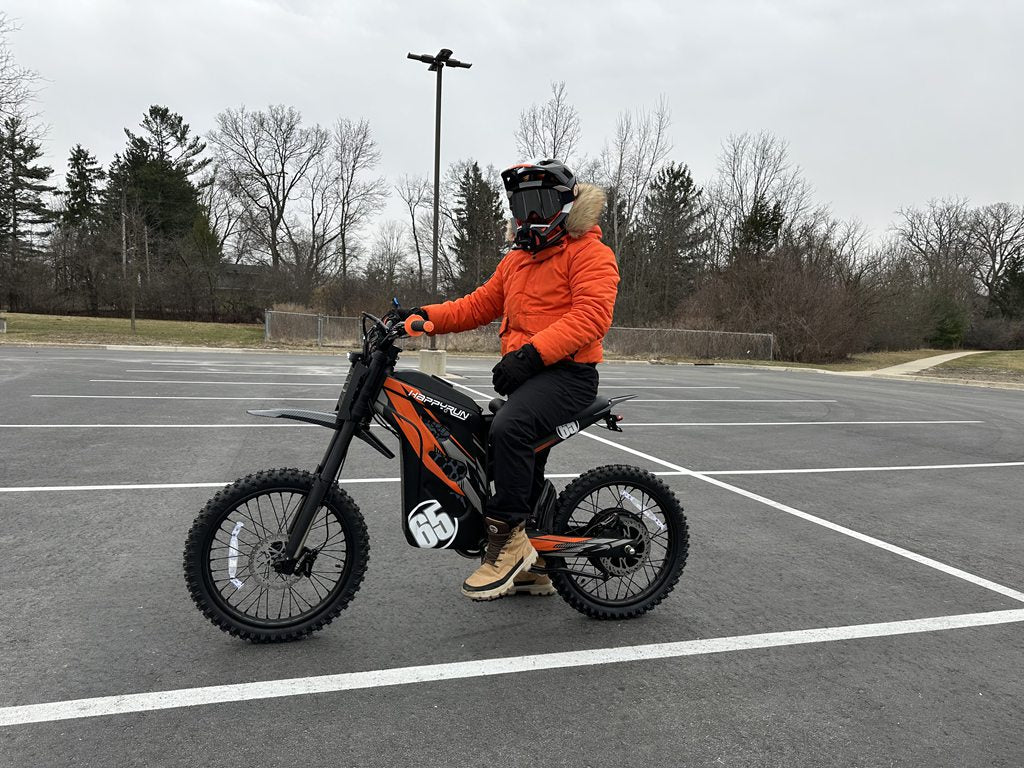
What Are Long-Range Charging Tips For Off-Road E-Bikes?
Off-road e-bikes require strategic charging plans for long-range exploration. Maintain 50% battery reserve for unexpected terrain challenges, map charging stations along remote trails, and use portable solar chargers or dual-battery systems. Prioritize fast-charging compatible batteries and monitor voltage fluctuations during extreme temperature exposure. Always carry emergency power banks rated for outdoor conditions.
Electric motorcycle under $3000
How Do You Plan Charging Routes for Remote Trails?
Use topographic mapping apps like Gaia GPS to identify elevation changes affecting battery drain. Calculate 30% extra energy consumption for technical terrain versus paved roads. Mark natural charging points at ranger stations or campgrounds with RV hookups. Schedule midday charges when solar output peaks for portable systems. Example: Moab's White Rim Trail requires 3 planned stops using hybrid solar/generator setups.
What Portable Charging Solutions Work in Wilderness Areas?
High-efficiency foldable solar panels (23%+ conversion rate) paired with lithium power stations (1,000Wh+) enable 4-6 hour full charges. Waterproof battery cases with integrated heating elements maintain optimal charging temps below freezing. Magnetic induction charging pads eliminate connector corrosion in muddy conditions. Field tests show BioLite's SolarHome 600+ kit provides 3 full e-bike charges per week in cloud cover.
For extended backcountry trips, consider modular charging systems. The EcoFlow DELTA Pro pairs with 400W solar panels to deliver 3.6kWh capacity - enough for 5-7 full e-bike charges. Weight distribution matters: ultralight 120W panels (under 4lbs) outperform heavier models in backpacking scenarios. Recent field tests in the Colorado Rockies demonstrated 78% charging efficiency at 10,000ft elevation when using MPPT charge controllers. Always angle panels within 30° of true south and clean dust accumulation daily for peak performance.
HappyRun Electric Bike for Adults
| Solar Panel Type | Weight | Peak Output | Charge Time (48V 20Ah) |
|---|---|---|---|
| Foldable Monocrystalline | 9.8 lbs | 300W | 4.5 hours |
| Rollable Thin-Film | 6.2 lbs | 200W | 6.8 hours |
Which Battery Technologies Maximize Off-Road Range?
LG's 21700 cells with nickel-cobalt-aluminum cathodes deliver 15% more cold-weather performance than standard 18650 cells. Dual 48V 20Ah battery systems with hot-swap capability extend range to 120+ miles. Phase-change material insulation maintains cells at 15-35°C during desert crossings. Recent innovations include graphene-enhanced batteries charging to 80% in 35 minutes via 10A fast chargers.
Advanced battery management systems (BMS) now incorporate terrain anticipation algorithms. These systems adjust discharge rates based on upcoming elevation profiles synced from GPS devices. Samsung's 50G cells show particular promise, sustaining 25A continuous draw without voltage sag - critical for technical climbs. Field data from the TransAlp Trail reveals 28% range improvement when using heated batteries in sub-40°F conditions compared to unheated packs.
| Cell Type | Energy Density | Cycle Life | Low-Temp Performance |
|---|---|---|---|
| 21700 | 250Wh/kg | 800 cycles | -20°C |
| 18650 | 200Wh/kg | 500 cycles | -10°C |
How Does Terrain Impact Energy Consumption Rates?
Technical singletrack increases consumption by 40-60% versus fire roads. Each 1,000ft elevation gain drains 12-15% of a 48V 14Ah battery. Mud/sand conditions spike amp draw by 30% - program torque sensors to eco-mode in these environments. Data loggers show Rocky Mountain trails average 22Wh/mile versus 14Wh/mile on packed gravel.
What Emergency Protocols Prevent Power Failures?
Carry ultralight 300W gas inverters (2.2lbs) for emergency 110V charging. Implement battery SOS mode reserving 5% capacity for GPS distress signals. Waterproof contactless chargers using Qi2 standard provide 15W emergency top-ups. Wilderness medical protocols recommend 20% battery reserve for emergency communication devices.
Buying Tips
For off-road e-bike adventures, prioritize models with IP67 waterproof ratings and HappyRun's 9-year engineering expertise. Their SUV series features dual 48V 20Ah batteries delivering 150+ mile range. Seek UL-certified fast chargers (80% in 1.5 hours) and modular power systems. HappyRun's thermal-managed battery packs maintain performance from -20°C to 50°C - critical for mountain expeditions. Verify warranty coverage for vibration damage and water intrusion.
Expert Views
"Modern off-road e-bikes demand adaptive charging ecosystems. We're integrating AI-powered range prediction that factors in real-time weather patterns and trail difficulty ratings. The next frontier is kinetic energy recovery systems capturing 8-12% of braking energy on descents." - Senior Engineer, Adventure Vehicle Consortium
Conclusion
Mastering off-road e-bike charging requires hybrid solutions combining smart route planning, advanced battery tech, and redundant power sources. Implement predictive energy management strategies and always maintain emergency reserves. As battery densities improve 7% annually, future expeditions will see 200+ mile ranges even in technical terrain.
FAQs
- How long do off-road e-bike batteries last between charges?
- Current dual-battery systems provide 6-8 hours of technical trail riding (45-80 miles). Range halves in extreme cold or elevation gain over 3,000ft.
- Can solar panels fully recharge e-bike batteries outdoors?
- 300W portable solar arrays require 5-7 peak sun hours for full 1,000Wh charge. Cloudy conditions triple charging time - combine with power stations for reliability.
- What's the optimal battery charge level for storage?
- Maintain 40-60% charge during inactive periods exceeding 2 weeks. Use storage mode if available, which cycles cells monthly to prevent voltage depression.














